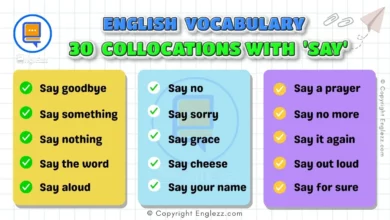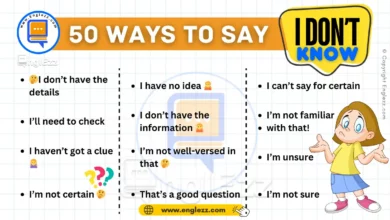Navigating the vast landscape of language learning, educators play a pivotal role in shaping students’ linguistic journeys. At the heart of effective communication lies the mastery of English pronunciation—an art that transcends mere sounds to become a powerful tool for conveying meaning and building connections. Welcome to a realm where words come alive through precise enunciation and where educators are the guiding beacons illuminating pathways to linguistic excellence.
Table of Contents
- Mastering English Pronunciation: A Comprehensive Guide
- Understanding Pronunciation Challenges
- Practice Activities for Pronunciation Improvement
- Techniques for Preventing Poor Pronunciation
- Corrective Approaches for Mispronunciations
- Engaging Pronunciation Strategies for Sound Mastery
- Evaluating Progress and Reinforcement Strategies
- Cultivating Language Confidence Through Pronunciation Proficiency
- Final Tips
- Boosting Pronunciation Proficiency
- FAQs:
- Q1: What are some common mistakes students make when learning English pronunciation?
- Q2: How important is accurate pronunciation for overall language proficiency?
- Q3: Can adults improve their pronunciation skills effectively?
- Q4: Are there any online resources or tools available to aid in English pronunciation practice?
- Q5: How can teachers provide constructive feedback on students’ pronunciation errors?
Mastering English Pronunciation: A Comprehensive Guide
In this comprehensive guide on mastering English pronunciation, we embark on a transformative exploration into the intricate world of spoken language. With unwavering dedication to empowering teachers with cutting-edge insights, our mission is clear: to equip educators with the tools needed to nurture students’ pronunciation prowess.

As we dig deeper into the nuances of phonetics and articulation, we unravel the profound impact that polished pronunciation wields over language proficiency and interpersonal communication. Join us on this enlightening journey as we unlock the secrets of sounding out words with precision and grace, fostering an environment where linguistic confidence blooms under expert guidance.
Understanding Pronunciation Challenges
Mastering English pronunciation can be a formidable task for learners, particularly due to the nuances of phonetic sounds that may differ from their native languages. Among the most challenging sounds in English are those related to vowel sounds like /ɪ/ in “hit” and /æ/ in “cat,” which can prove elusive for non-native speakers. Consonant clusters such as “thr” in “three” or “squirrel” also present difficulties due to their complexity. These challenges often stem from differences in articulation patterns and phonetic inventories between English and other languages, requiring targeted practice and guidance from educators.
Students commonly encounter difficulties in mastering accurate pronunciation when faced with words that contain silent letters, irregular stress patterns, or unfamiliar diphthongs. For instance, the word “colonel,” pronounced as /ˈkɜːrnəl/, can be perplexing for learners due to its deviation from conventional spelling-to-sound rules. Additionally, intonation patterns crucial for conveying meaning effectively during speech can pose challenges, affecting comprehension and overall communication success. Correct pronunciation plays a pivotal role not only in language proficiency but also in establishing strong communicative skills essential for academic, professional, and social interactions.
The impact of correct pronunciation on language proficiency cannot be overstated; it directly influences clarity of expression and comprehension. Clear enunciation fosters effective listening skills, reduces instances of miscommunication, and enhances overall fluency. Without mastering accurate pronunciation, students may face barriers to fully expressing themselves or understanding others, impeding their linguistic growth. Therefore, guiding learners through these challenges becomes paramount for educators aiming to cultivate well-rounded language abilities that empower students to navigate diverse linguistic contexts confidently.
Practice Activities for Pronunciation Improvement
Engaging students in interactive practice activities is key to improving their pronunciation skills. One effective approach is to focus on specific sound problems by tailoring activities to target those challenging sounds. For example, for students struggling with the “th” sound, creating tongue twisters or minimal pairs exercises can provide targeted practice opportunities. These activities not only help learners identify and differentiate between similar sounds but also enhance their muscle memory for correct pronunciation.
Hands-on exercises play a crucial role in allowing educators to conduct interactive pronunciation practice sessions. Incorporating tools like phonetic charts, pronunciation guides, or even multimedia resources such as videos and audio recordings can make these sessions more engaging and effective. By combining visual aids with verbal instructions, teachers can create dynamic learning environments that cater to different learning styles, thereby maximizing student engagement and retention of correct pronunciation patterns.
Innovative techniques are invaluable for facilitating sound repetition and correction in a way that keeps learners motivated and focused. Gamified approaches like pronunciation bingo or word association games not only make practice sessions enjoyable but also encourage active participation and healthy competition among students. By introducing elements of fun and creativity into pronunciation activities, educators can foster a positive attitude towards learning difficult sounds while reinforcing correct articulation through repeated practice in a stimulating manner.
Techniques for Preventing Poor Pronunciation
In the realm of language learning, prevention often proves more effective than intervention when it comes to addressing pronunciation challenges. Educators play a pivotal role in steering students away from developing entrenched poor pronunciation habits by employing proactive strategies. One effective technique is exposing learners to phonetic exercises early on to establish a strong foundation that minimizes the risk of persistent errors. For example, incorporating phonics drills and tongue twisters into regular lessons can help students develop muscle memory for correct sounds, thereby preventing common mispronunciations.

Early intervention serves as a key principle in the arsenal against poor pronunciation habits. By promptly addressing emerging issues and offering targeted guidance, educators can redirect students towards accurate pronunciations before errors become ingrained. For instance, detecting recurring mistakes in vowel sounds and promptly providing corrective feedback can nip potential long-term mispronunciation problems in the bud. This hands-on approach not only enhances students’ language skills but also fosters their confidence by assuring them that their teacher is attuned to their pronunciation progress.
Empowering educators with tools and resources geared towards cultivating a supportive learning environment focused on accurate pronunciation further fortifies the battle against poor articulation. By integrating technology-based platforms that offer interactive pronunciation exercises or organizing peer-to-peer practice sessions, teachers can create immersive settings that prioritize sound precision. A classroom atmosphere where correct articulation is championed and celebrated encourages active engagement in refining pronunciation skills, propelling learners towards linguistic proficiency while mitigating the risks of persistent mispronunciations often associated with inadequate support structures.
Corrective Approaches for Mispronunciations
When encountering mispronunciations in English, it’s vital for educators to deploy targeted strategies that address these errors effectively. One approach involves breaking down the problematic sound into its phonetic components, allowing students to understand the correct mouth and tongue positions needed for proper pronunciation. For example, a common error among English language learners is substituting the “th” sound with a “d” sound. By explaining how the placement of the tongue differs between these sounds and providing visual aids or demonstrations, teachers can help students grasp the nuances of pronunciation more effectively.
In addition to deconstructing specific sounds, practical methods such as minimal pairs exercises can be instrumental in refining pronunciation accuracy. By contrasting words that differ by only one sound – such as “ship” and “sheep” or “bet” and “bat” – learners can practice discriminating subtle differences in pronunciation. Emphasizing this distinction through repeated practice not only sharpens auditory discrimination skills but also hones articulatory precision. Offering ample opportunities for students to engage with minimal pairs in various contexts helps cement their understanding of correct sound production.
Feedback and reinforcement play pivotal roles in steering students towards aligning their pronunciations with standard English norms. Constructive feedback should pinpoint areas of improvement while acknowledging progress made by learners. Encouraging self-correction mechanisms empowers students to take an active role in rectifying mispronunciations independently. Employing positive reinforcement strategies such as praise or rewards for consistent improvement motivates students to persist in refining their pronunciation skills. By fostering a supportive learning environment focused on constructive feedback and encouragement, educators lay a strong foundation for students to enhance their spoken English proficiency and boost their confidence in communicating effectively.
Engaging Pronunciation Strategies for Sound Mastery
Mastering English pronunciation goes beyond repetition and correction; it involves engaging students in fun and interactive ways that make learning enjoyable and effective. Incorporating games, tongue twisters, or even music into your pronunciation practice sessions can offer a refreshing twist to traditional methods. For instance, playing the ‘Minimal Pairs‘ game where students have to differentiate between similar sounds like ‘ship’ and ‘sheep’ can be both entertaining and educational. These activities not only break the monotony but also stimulate retention by appealing to different learning styles.
Collaborative activities are another powerful tool in achieving sound mastery. By pairing students to provide feedback on each other’s pronunciation, you create an environment conducive to mutual learning. Peer feedback can be constructive and supportive, encouraging students to actively listen and adjust their own speech patterns. For example, utilizing group sessions where students mimic each other’s pronunciation with constructive criticism promotes peer-to-peer learning dynamics. This collaborative approach fosters a sense of community within the classroom while improving individual speaking abilities.
Regular pronunciation practice drills are essential for continuous improvement in mastering English sounds. Implementing short daily exercises dedicated to specific phonetic challenges helps reinforce correct pronunciations over time. For example, designating a few minutes at the beginning of each class for focused pronunciation practice sets a consistent routine that enables steady progress. Repetition is key in language acquisition, and by integrating these drills into your teaching methodology, you instill discipline in students while fostering a habit of self-improvement through regular practice.
In essence, incorporating engaging strategies like interactive games, collaborative activities for peer feedback, and consistent practice drills can significantly enhance student engagement and proficiency in mastering English pronunciation. By making learning enjoyable and social while maintaining a structured approach to practice sessions, educators empower their students to develop strong speaking skills that ensure effective communication in both academic and real-world contexts.
Evaluating Progress and Reinforcement Strategies
Assessing student progress in mastering English pronunciation is a crucial aspect of facilitating effective learning outcomes. To establish clear criteria for evaluation, teachers can create a checklist of targeted sounds or phonetic features that students are working on. For instance, if learners struggle with the distinction between voiced and voiceless consonants like /v/ and /f/, teachers can track accuracy through repeated practice sessions. By documenting pronunciation improvements over time, educators can tailor their feedback and instruction to address specific areas of difficulty, ensuring a focused approach to pronunciation mastery.
Tracking improvements in pronunciation can be aided by technology tools such as speech recognition software or recording devices. These tools enable students to compare their own pronunciation with standard models and assess changes in their articulation patterns. Additionally, maintaining consistency in practicing problem sounds is essential for reinforcing correct pronunciations. Implementing regular practice drills targeting challenging phonemes allows students to internalize proper articulation techniques and develop muscle memory for accurate sound production.
Reinforcement activities play a pivotal role in solidifying correct pronunciations over time. Engaging students in interactive games, role-playing scenarios, or storytelling exercises that involve the targeted sounds enhances retention and application of learned phonetic rules. For example, organizing a pronunciation challenge where students compete to pronounce words accurately can foster friendly competition while consolidating newly acquired skills. By integrating reinforcement strategies creatively into lesson plans, educators not only boost student confidence but also stimulate ongoing improvement in pronunciation proficiency.
Cultivating Language Confidence Through Pronunciation Proficiency
Mastering English pronunciation goes beyond mere clarity in communication; it instills a sense of confidence and competence in language learners. When students can articulate sounds accurately and effectively, they feel empowered to engage in conversations without the fear of being misunderstood. As educators guide their students toward pronunciation proficiency, they are not just shaping linguistic skills but also bolstering overall confidence in using the English language.
Imagine a scenario where a student confidently introduces themselves during a presentation, pronouncing each word with precision and fluency. This demonstration of strong pronunciation not only enhances the student’s credibility but also creates a positive impression on the audience. By focusing on pronunciation improvement strategies, teachers play a pivotal role in equipping learners with the tools to express themselves confidently in both academic and real-life settings.
Moreover, as students gain mastery over English sounds through consistent practice and feedback, they naturally develop a greater sense of self-assurance in their language abilities. Feeling comfortable with one’s pronunciation fosters a willingness to engage more actively in verbal interactions, leading to improved communication skills overall. By emphasizing the importance of pronunciation proficiency, educators cultivate an environment where students can thrive linguistically and culturally.
Final Tips
As you strive to master English pronunciation, here are three concise yet powerful tips to guide your journey towards linguistic proficiency.
- Firstly, consistency is key; make pronunciation practice a routine part of your language learning efforts. Allocate dedicated time each day to focus on specific sounds or words that challenge you the most. By committing to regular practice sessions, you will gradually notice improvements in your spoken English.
- Secondly, seek feedback from teachers, peers, or language partners. Constructive criticism plays a crucial role in refining your pronunciation skills. Embrace corrections and suggestions with an open mind, as they serve as valuable tools for growth and development. Engage in conversations where feedback is encouraged, creating an environment conducive to enhancing your pronunciation accuracy.
- Lastly, employ technology as a supportive tool in your pronunciation journey. Utilize resources such as language learning apps or online platforms that offer interactive exercises and feedback on your pronunciation performance. These digital aids can provide instant insights into areas that require improvement and offer targeted exercises for honing specific sound patterns more effectively.
By adhering to these three fundamental tips – consistency in practice, embracing constructive feedback, and leveraging technological resources– you can advance steadily towards mastering English pronunciation and cultivating confidence in expressing yourself fluently and accurately. Stay dedicated to your learning process, remain receptive to guidance, and explore innovative tools that complement traditional teaching methods for a well-rounded approach to improving your spoken English skills.
Boosting Pronunciation Proficiency
As we conclude this comprehensive guide on mastering English pronunciation, it is crucial to acknowledge the pivotal role educators play in shaping students’ linguistic skills. By understanding and addressing the challenges learners face in pronouncing certain sounds, teachers can create a supportive environment that nurtures language development. Correcting mispronunciations with precision, engaging in interactive practice activities, and consistently evaluating progress are key components of an effective pronunciation improvement strategy.
By empowering educators with the knowledge and tools presented in this guide, we aim to instill confidence in both teachers and students alike. Embracing a growth mindset and a willingness to engage with innovative teaching techniques can significantly enhance the effectiveness of pronunciation instruction. Remember, each step taken towards mastering English pronunciation brings learners closer to confident communication and linguistic proficiency.
FAQs:
Q1: What are some common mistakes students make when learning English pronunciation?
A: Common mistakes include misplacing word stress, struggling with specific sounds like “th” or “r”, and failing to differentiate between similar vowel sounds.
Q2: How important is accurate pronunciation for overall language proficiency?
A: Accurate pronunciation plays a crucial role in enhancing communication effectiveness and overall language fluency.
Q3: Can adults improve their pronunciation skills effectively?
A: Yes, with dedicated practice and guidance from experienced educators, adults can significantly improve their pronunciation skills over time.
Q4: Are there any online resources or tools available to aid in English pronunciation practice?
A:Yes, various online platforms offer interactive exercises, audio samples, and instructional videos tailored to help individuals improve their English pronunciation skills.
Q5: How can teachers provide constructive feedback on students’ pronunciation errors?
A: Teachers can give specific examples of mispronunciations, offer guidance on correct sound production, encourage regular practice sessions, and provide positive reinforcement to support students’ progress.








